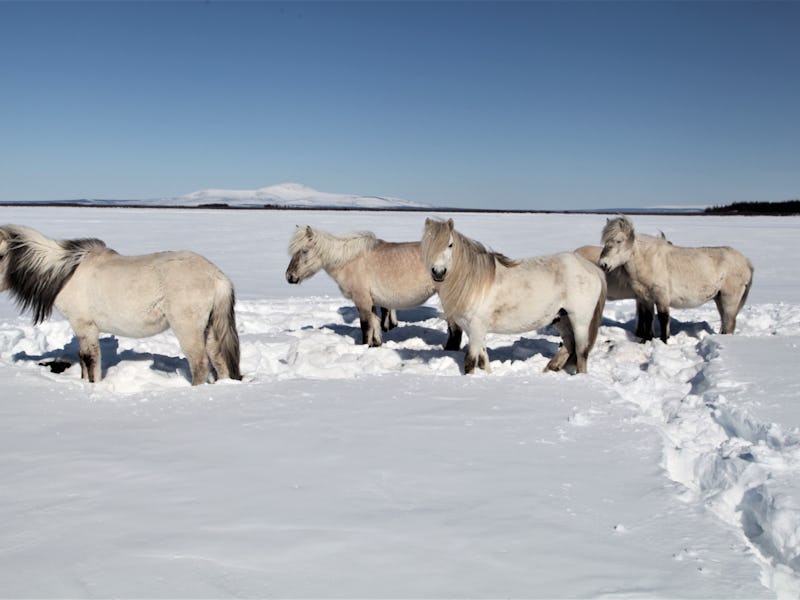How Siberian horses became an unlikely climate hero in the Arctic
These adorable animals may protect thawing permafrost.

In the Arctic, the thawing permafrost presents a huge risk to the environment. It is both caused by and contributing to climate change, releasing greenhouse gases into the atmosphere as temperatures warm.
Surprisingly, herds of Siberian horses and other animals may hold the solution.
New research conducted in Russia shows how Arctic creatures like horses, bison, and reindeer can actually slow down the thawing of soils that were once permanently frozen.
Together, these herds could potentially preserve as much as 80 percent of the world’s soil through the year 2100, according to the study.
Here’s how it works: Heavy snowfall blankets the ground and insulates it from cold air. Grazing animals stomp and kick up the snow, cutting down on that insulation. As a result, the soil freezes — or, in the case of permafrost, stays frozen.
When the snow cover is scattered and compressed thanks to the grazing animals' stamping hooves, its insulating effect is dramatically reduced.
The effect is dramatic: Over 20 years, when 100 animals were moved to a one square kilometer area, they halved the average snow cover.
"This type of natural manipulation in ecosystems that are especially relevant for the climate system has barely been researched to date,” Beer said in a statement, “but holds tremendous potential."
The findings were published Tuesday in the journal Scientific Reports.
Permafrost loss: A vicious cycle
In the new study, led by University of Hamburg professor Christian Beer, researchers modeled that effect to see how it may combat the growing threats of climate change in the Arctic overall. The research team simulated temperature change over time: With no intervention, permafrost temperatures would rise by 3.8 degrees Celsius by the year 2100.
With the animal herds in play, that rise could slow to just 2.1 degrees Celsius.That’s enough of a change to preserve 80 percent of soils, Beer’s team says.
Herds of herbivores preserve the permafrost -- even under strong global warming.
There are a few caveats to consider: In the summer, animals may dig up the ground layer of moss that keeps it cool, and researchers don’t know yet how moving animals would spread them across the land. But the researchers say the winter protections outweigh the summer risks.
For years, scientists have warned that if we don’t take action to curb global warming, we could lose half of the world’s permafrost by 2100. That melting will release carbon dioxide into the atmosphere, further contributing to rising temperatures.
A paper published in January 2018 suggests that, over the next 300 years, thawing tundra could release 10 times as much carbon as humans emitted in the year 2016, as Inverse reported at the time. That permanently frozen soil covers about 5.5 percent of Earth.
While moving animals to lands with heavy snowfall is surprisingly low-tech, it just might work, say the authors of the new study.
"It may be utopian to imaging resettling wild animal herds in all the permafrost regions of the Northern Hemisphere," Beer said.
"But the results indicate that using fewer animals would still produce a cooling effect.”
The method could slow the loss of permafrost, and as a result, the release of carbon dioxide into the atmosphere — hindering this dangerous feedback loop the natural way.